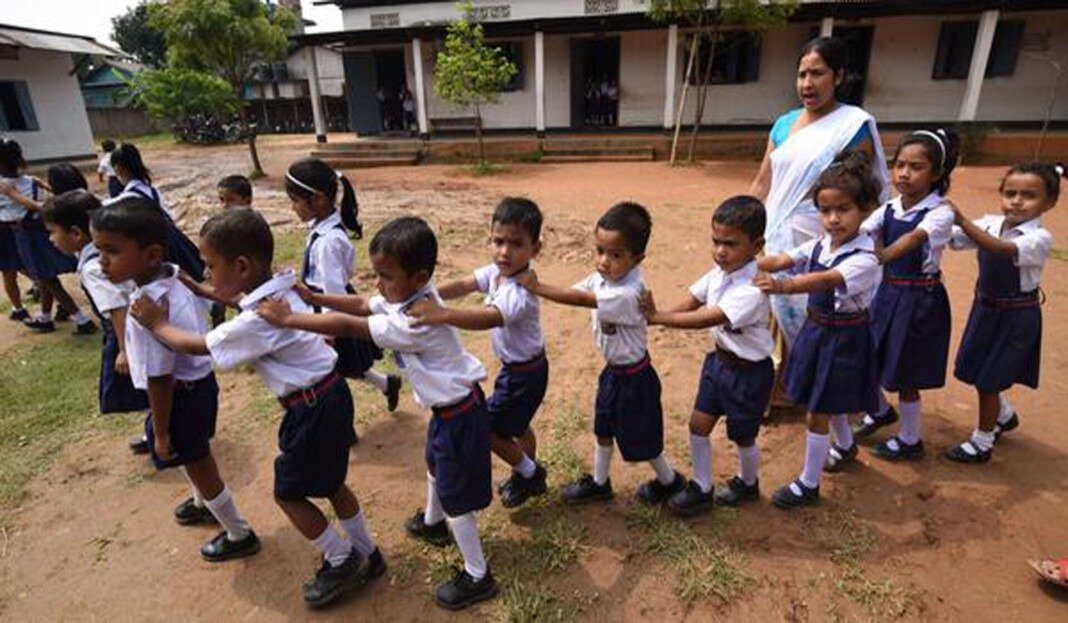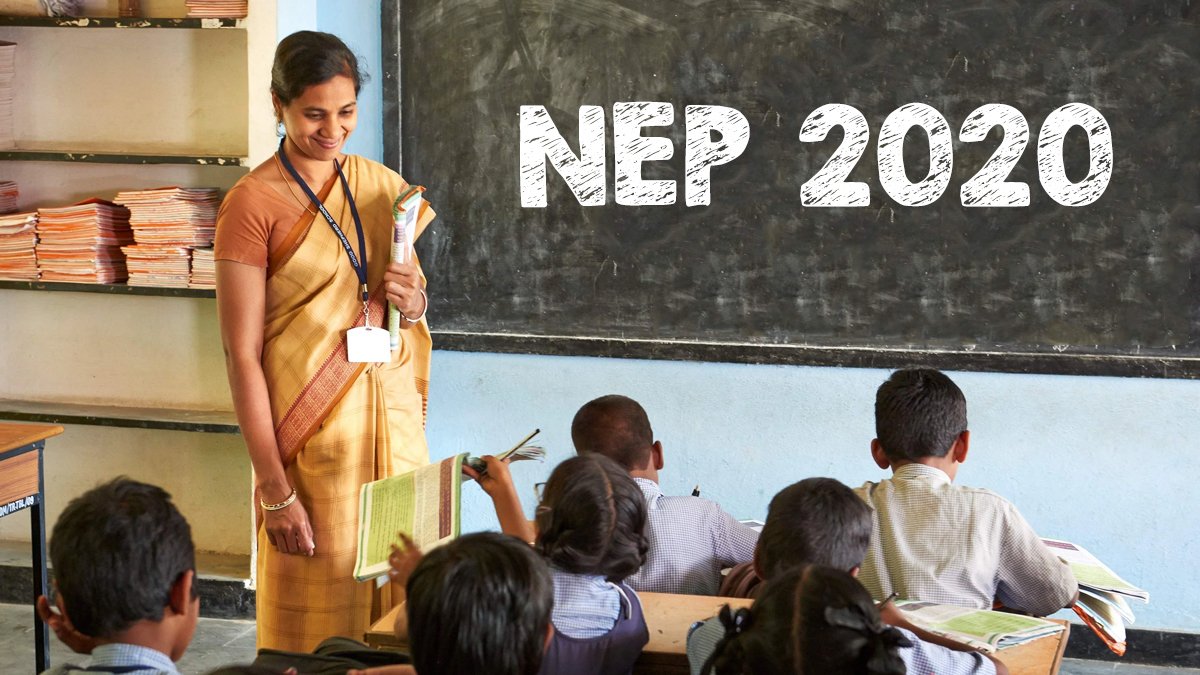By: Dipak Kurmi
On September 21, Education Minister Dr. Ranoj Pegu shared unfortunate news via Twitter. In various districts of the state, 11,272 schools at different levels – primary, upper primary, secondary, and higher secondary – will be shut down. The reason behind this decision is the low enrollment of students in these schools. Although there are teachers, there aren’t enough students. Notably, the government had already closed more than 8,000 schools, and another round of closures is imminent. To highlight the issue, the state government introduced an app called Shikshasetu, revealing the low student attendance in many schools established before independence. The app indicates that currently, 3,536 schools in Assam have fewer than 15 students on average, and 7,736 schools have fewer than 30 students on average. In response, the government plans to close these schools and relocate the teachers to nearby ones due to the student shortage, as indicated in the Education Minister’s published statistics.
In Assam, Dima Hasao district has the most schools, totaling 703, followed by Kokrajhar district with 587 and East Karbi Anglong district with 568 schools. Soon, a lockdown will affect numerous schools in every district across the state, except for South Salmara-Mankachar and Dhubri districts. It’s likely that, in the near future, many school compounds will be overgrown with grass and surrounded by forests. The school buildings might even transform into the focal point for local festivals like Bihu.
The reason behind the low attendance in rural schools is linked to the presence of Jatiya Bidyalays and Shankardev Vidya Niketan, both under Vidya Bharati, established locally. In indigenous Assamese villages, these schools have become the preferred choice for citizens. Teachers from these schools attract parents by offering a competitive learning environment. Consequently, parents opt for these private sector schools that rely on student fees. They reject government schools near their homes. Regrettably, middle-class families in rural areas often encourage enrolling their children in private English medium schools in urban areas rather than the nearby government schools. Interestingly, some teachers from public schools also choose to enroll their own children in private sector schools.
In contrast to the low enrollment in government schools in Assam, there’s a different scenario in minority areas. Primary schools in these regions have hundreds of students, outnumbering the usual two or three teachers. Similarly, government schools in tea plantation areas, where tribal citizens reside, also boast sufficient student numbers.
When examining the infrastructure of government schools in developed Assam, numerous concerning issues come to light. Some schools, established before independence or operating as venture schools for an extended period, were taken over by the government, but the infrastructure remains lacking. Problems include a shortage of clean drinking water, inadequate toilets for students, a lack of modern educational equipment, insufficient science facilities, limited sports amenities, frequent teacher transfers, inconsistent electricity supply, a slow-paced curriculum, and conflicts between teachers and school management committees. Additionally, conscious parents are deterred from choosing government schools due to ongoing issues like fights, and frequent festivals such as Bihu and Ras taking place on school premises.
The mid-day meals provided by the state government for school children in Assam have had unintended consequences on real education. Despite lacking books or proper seating, the students’ attention is often diverted to the kitchen near the classrooms from the moment the school day begins. Instead of focusing on teaching, teachers find themselves occupied with collecting food items. In the past, Assam’s schools didn’t provide meals, and many parents were financially struggling. While the mid-day meal system has addressed the issue of empty stomachs for rural students, it hasn’t necessarily fulfilled their intellectual needs.
Students in the state’s schools face challenges due to irregularities in the government’s distribution of free textbooks. The delayed provision of textbooks and flawed distribution of uniforms have diverted students from their intended educational path. The disparity between the rich and poor in rural areas has significantly impacted government schools. Middle-class families often view it as a matter of pride for their children to attend the same government school as those from poorer backgrounds. In reality, government schools have become the primary option for children from impoverished families. However, for poor families that have moved into the middle class through hard work, the preferred choice is often a nearby private sector school. Over the last decade, growing confidence in private sector schools in rural Assam has led to the closure of government schools.
In Assam, government higher secondary schools face a serious threat due to the emergence of junior colleges operating under the banner of higher secondary education, with approval from the Assam Higher Secondary Education Council. Junior colleges open for 300 out of 365 days a year, witness parents waiting overnight at the gates for admission forms. These colleges excel with extensive teaching, frequent internal examinations, thorough subject study, and a competitive atmosphere, leading them to significant success. In contrast, government higher secondary schools lack a similar environment. A visit to these schools reveals shortcomings, particularly in the utilization of science education laboratories.
Government schools in Assam are losing out in the competition against private schools, evident in the annual higher secondary results. Private sector junior colleges, particularly in Arts, Science, and Commerce, consistently outperform their government counterparts. The stark contrast in salaries between private and government school teachers plays a role, with junior college teachers earning meager salaries (averaging Rs. 5,000 to Rs. 10,000) yet shouldering significant responsibilities. When these teachers transition to government schools, there’s often a decline in their teaching enthusiasm. The prohibition on government school teachers providing tuition has caused concern among some parents. While private tuition has decreased, the number of such teachers hasn’t risen. Government policies, such as the limit on teaching two classes daily, have led to peculiar outcomes, hindering intellectual growth. Some teachers in government schools view teaching merely as a job, deterring students from seeking additional education or skills outside the classroom. This situation raises concerns about the future of such schools.
In Assam, there’s currently no apparent alternative to challenge the state government’s decision. The crucial question is, who stands to gain if schools with minimal or no students aren’t shut down? Will the teachers of these schools be paid from public funds despite being unemployed? Can people commit to shifting their children from private schools back to government schools? Capitalism is visibly asserting itself in Assam’s society, influenced by modernity. The ascendancy of the private sector and the stagnation of the public sector are bound to bring about significant transformations. The responsibility for these changes lies with us, the middle-class citizens. (The writer can be reached at dipaknewslive@gmail.com)







